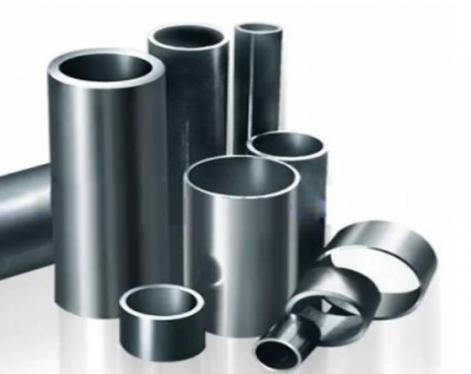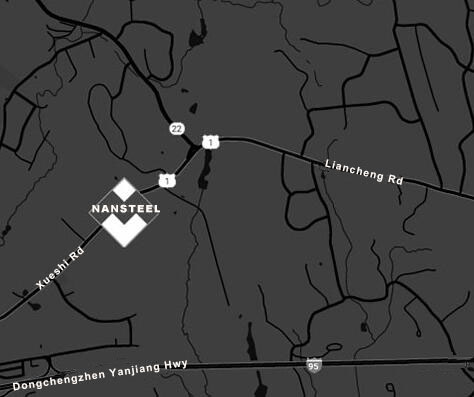The production cost structure of precision seamless pipe is more complex because it requires more finishing processes than ordinary seamless pipe. Nansteel Manufacturing Co., Ltd. carefully summarizes the main components of the production cost of precision seamless pipe:
Raw material costs
Billet cost: This is the most important cost component. Precision seamless steel pipes are usually reprocessed based on hot-rolled seamless steel pipes. Therefore, the quality and price of the billet directly affect the cost of the final product. The price of the billet is affected by the steel market, steel type (such as carbon steel, alloy steel, stainless steel) and billet specifications.
Alloy elements (if alloy steel is used): If alloy precision seamless pipes are produced, alloy elements such as chromium, nickel, and molybdenum need to be added. The price fluctuations of these elements will also affect the cost.
Production and processing costs
1. Hot rolling/cold rolling cost (tube billet manufacturing cost): If the tube billet is produced by yourself, the cost of hot rolling or cold rolling needs to be considered, including energy consumption, equipment depreciation, labor costs, etc. for heating, rolling, cutting and other processes.
2. Cold drawing/cold rolling/finishing rolling cost (finishing cost): This is a cost unique to the production process of precision seamless pipes.
3. Cold drawing: including drawing force, die loss, lubricant consumption, drawing passes, etc.
4. Cold rolling: including rolling force, roll wear, lubricating coolant consumption, rolling passes, intermediate annealing, etc.
5. Finish rolling: includes the use and maintenance of precision rolling mills, the loss of high-precision molds, strict process control, etc. The cost is usually higher than cold drawing and cold rolling.

6. Heat treatment cost: In order to eliminate the internal stress caused by cold working, heat treatment is usually required, such as annealing, normalizing, etc., which includes the energy consumption of the heating furnace, holding time, cooling method, etc.
7. Surface treatment cost: Depending on customer needs, surface treatments such as pickling, phosphating, polishing, and honing may be required, which will increase additional costs.
8. Inspection and testing costs: Precision seamless pipes require strict size, mechanical properties and surface quality inspections, including non-destructive testing (such as ultrasonic testing, eddy current testing) and destructive testing (such as tensile testing, hardness testing), which will incur testing costs.
9.Mold and tool costs: Cold drawing, cold rolling and finish rolling all require the use of various molds and tools. The manufacturing cost, maintenance cost and replacement cost of these molds and tools also need to be included in the production cost.
10. Lubrication and cooling costs: A large amount of lubricant and coolant is required during cold working to reduce friction and lower temperature, which will incur corresponding costs.
Equipment depreciation and maintenance costs
The production of precision seamless pipes requires high-precision cold drawing machines, cold rolling mills, finishing mills, heat treatment furnaces and other equipment. The investment in these equipment is huge and the depreciation costs are high. Daily maintenance and upkeep of equipment also requires certain costs.
Labor costs
The production of precision seamless pipes requires skilled operators and quality inspectors, and the labor cost is relatively high.
Energy costs
The production process consumes a large amount of energy, including electricity, natural gas, water, etc.
Environmental costs
As environmental protection requirements become increasingly stringent, companies need to invest in environmental protection management, such as waste gas treatment, wastewater treatment, solid waste treatment, etc.
Management costs
The costs of corporate operations management, administrative management, financial management, etc. will also be allocated to product costs.
Quality control costs
In order to ensure product quality, it is necessary to establish a complete quality management system and conduct strict quality control, which will also incur certain costs.
Summary
The production cost structure of precision seamless steel pipes is complex, with raw material costs and finishing costs being the primary components. Compared to ordinary seamless pipes, precision seamless pipes have higher production costs, primarily due to the need for more finishing steps and higher quality control requirements.
Read more: Anti-corrosion Methods for Precision Seamless Pipes
Raw material costs
Billet cost: This is the most important cost component. Precision seamless steel pipes are usually reprocessed based on hot-rolled seamless steel pipes. Therefore, the quality and price of the billet directly affect the cost of the final product. The price of the billet is affected by the steel market, steel type (such as carbon steel, alloy steel, stainless steel) and billet specifications.
Alloy elements (if alloy steel is used): If alloy precision seamless pipes are produced, alloy elements such as chromium, nickel, and molybdenum need to be added. The price fluctuations of these elements will also affect the cost.
Production and processing costs
1. Hot rolling/cold rolling cost (tube billet manufacturing cost): If the tube billet is produced by yourself, the cost of hot rolling or cold rolling needs to be considered, including energy consumption, equipment depreciation, labor costs, etc. for heating, rolling, cutting and other processes.
2. Cold drawing/cold rolling/finishing rolling cost (finishing cost): This is a cost unique to the production process of precision seamless pipes.
3. Cold drawing: including drawing force, die loss, lubricant consumption, drawing passes, etc.
4. Cold rolling: including rolling force, roll wear, lubricating coolant consumption, rolling passes, intermediate annealing, etc.
5. Finish rolling: includes the use and maintenance of precision rolling mills, the loss of high-precision molds, strict process control, etc. The cost is usually higher than cold drawing and cold rolling.

6. Heat treatment cost: In order to eliminate the internal stress caused by cold working, heat treatment is usually required, such as annealing, normalizing, etc., which includes the energy consumption of the heating furnace, holding time, cooling method, etc.
7. Surface treatment cost: Depending on customer needs, surface treatments such as pickling, phosphating, polishing, and honing may be required, which will increase additional costs.
8. Inspection and testing costs: Precision seamless pipes require strict size, mechanical properties and surface quality inspections, including non-destructive testing (such as ultrasonic testing, eddy current testing) and destructive testing (such as tensile testing, hardness testing), which will incur testing costs.
9.Mold and tool costs: Cold drawing, cold rolling and finish rolling all require the use of various molds and tools. The manufacturing cost, maintenance cost and replacement cost of these molds and tools also need to be included in the production cost.
10. Lubrication and cooling costs: A large amount of lubricant and coolant is required during cold working to reduce friction and lower temperature, which will incur corresponding costs.
Equipment depreciation and maintenance costs
The production of precision seamless pipes requires high-precision cold drawing machines, cold rolling mills, finishing mills, heat treatment furnaces and other equipment. The investment in these equipment is huge and the depreciation costs are high. Daily maintenance and upkeep of equipment also requires certain costs.
Labor costs
The production of precision seamless pipes requires skilled operators and quality inspectors, and the labor cost is relatively high.
Energy costs
The production process consumes a large amount of energy, including electricity, natural gas, water, etc.
Environmental costs
As environmental protection requirements become increasingly stringent, companies need to invest in environmental protection management, such as waste gas treatment, wastewater treatment, solid waste treatment, etc.
Management costs
The costs of corporate operations management, administrative management, financial management, etc. will also be allocated to product costs.
Quality control costs
In order to ensure product quality, it is necessary to establish a complete quality management system and conduct strict quality control, which will also incur certain costs.
Summary
The production cost structure of precision seamless steel pipes is complex, with raw material costs and finishing costs being the primary components. Compared to ordinary seamless pipes, precision seamless pipes have higher production costs, primarily due to the need for more finishing steps and higher quality control requirements.
Read more: Anti-corrosion Methods for Precision Seamless Pipes
Previous:When to Choose Seamless Pipe?









